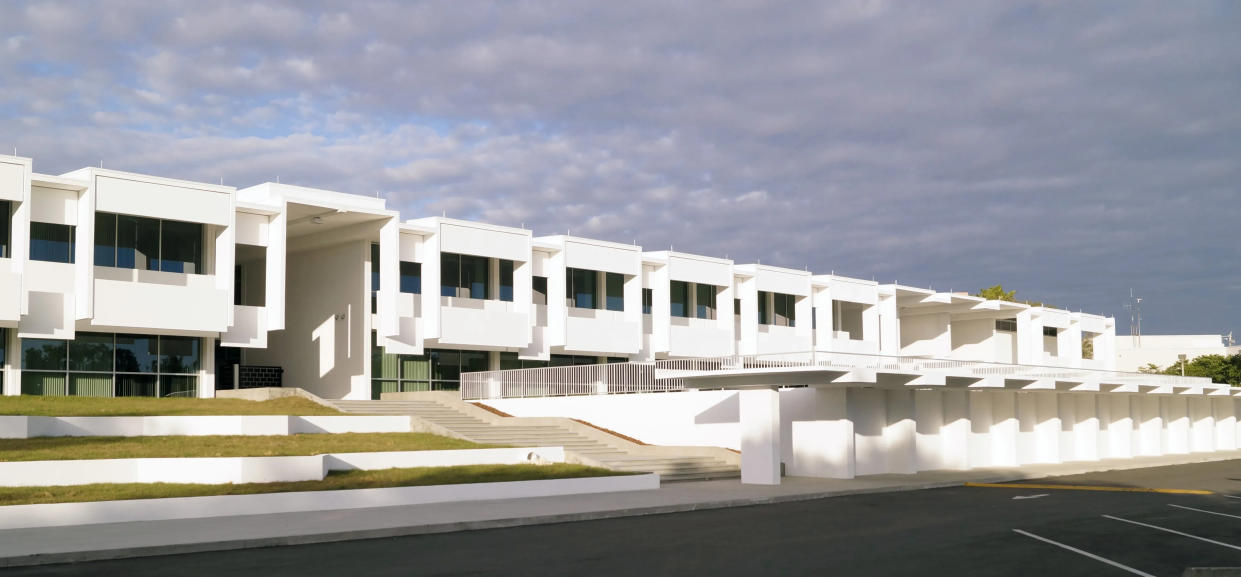Sarasota High School subject of CDC health evaluation following anonymous mold complaints

Some buildings at Sarasota High School have been the subject of an ongoing mold issue for years, causing some teachers to report illnesses and breathing struggles, problems the district said it was aware of and has been working with health officials to fix, according to federal officials.
On Oct. 13, the National Institute for Occupational Safety and Health at the Centers for Disease Control and Prevention sent a letter to the Sarasota School District in response to a confidential report sent by a Sarasota County School District employee. The anonymous complainant detailed concerns regarding respiratory issues, headaches, nose and ear bleeding, and sinus infections attributed to mold in buildings 13 and 14 on campus.
The NIOSH and CDC are within the U.S. Department of Health and Human Services.
The buildings, designed by architect Paul Rudolph and constructed in 1960, were renovated in 2015 at a $8.5 million cost. The renovation came following the demolition of Riverview High, another Rudolph-designed high school, in 2009 as many in the Sarasota community advocated for saving the building's current design.
The school was originally built without air conditioning, and the classrooms were designed with windows to allow cross-ventilation.
A study referenced in the CDC's report found some elevated levels of mold fungus in the buildings. The anonymous complainant noted damaged stucco in both buildings causing moisture to enter the buildings and cause mold. Carbon dioxide levels in classrooms would also increase throughout the day due to a lack of fresh airflow, peaking at about 2,000 parts per million, according to the report.
The healthy limit for carbon dioxide exposure in the workplace is 5,000 parts per million, according to the Occupational Safety and Health Administration.
Teachers and students reported headaches, fatigue, nausea, burning eyes, and dry mouth that worsened through the school day and resolved when they exited the buildings, according to the anonymous complainant in the CDC report.
Both buildings had a strong musty odor and the HVAC system would turn off automatically at the end of the day, the complainant said. They also said the carpets were stained, rarely vacuumed, and generally in poor condition, according to the report.
The last line of the report said it served as the closure of the department's health hazard evaluation for Sarasota High School.
The Herald-Tribune attempted to speak on the record to several current and former Sarasota High teachers, but those who responded said they feared retaliation if they spoke out.
More: New College of Florida upperclassmen move into hotel amid flurry of housing changes
Sarasota School District response to mold complaints
Sarasota Schools spokesman Craig Maniglia said the district has complied with all recommendations from the NIOSH and CDC dating back to 2016. Buildings 13 and 14 were also already being renovated as part of normal maintenance procedures that started Wednesday, he said.
Maniglia also said the district has acted on and responded to every complaint received about Sarasota High's mold issue.
As part of the report, the CDC noted that employees often hesitate to raise issues such as mold in the workplace for fear of being singled out or repercussions from management.
Suzanne Tomasi, the epidemiologist who sent the letter from the NIOSH and CDC, said she commended the Sarasota School District's existing efforts to fix the mold issue and provided additional recommendations to remedy the problem.
The recommended work includes cleaning or removing any mold or water-damaged materials in Buildings 13 and 14, keeping the HVAC system at a low setting when buildings are unoccupied instead of just turning them off, and encouraging employees to report symptoms related to the issue to their healthcare provider and a designated individual at the school.
The report also recommended the district fix insulation issues in three classrooms in building 13, as well as maintaining cleanliness in carpets because of dust and mites that can cause allergy symptoms. Hard flooring is preferred to increase cleanliness and reduce moisture and dust buildup, the report said, but the district told the agency it preferred carpet to reduce noise in the classroom.
The district should post copies of the 13-page letter in full in a prominent place accessible to all for 30 calendar days, the report suggests.
Follow Herald-Tribune Education Reporter Steven Walker on Twitter at @swalker_7. He can be reached at sbwalker@gannett.com.
This article originally appeared on Sarasota Herald-Tribune: Sarasota High School subject of CDC mold report after complaint filed

